PDF chapter test TRY NOW
Artificial vegetative propagation is carried out for the production of economically important and useful plants. It is a method that is mainly used to introduce desired characters in the new plants.
- Cutting
- Grafting
- Layering
- Tissue culture
Cutting:
The small part of the stem with nodes and internodes is removed from the parent, planted in moist soil, and developed as a new plant. And, cutting is also possible in the roots of some plants.
The steps are as follows:
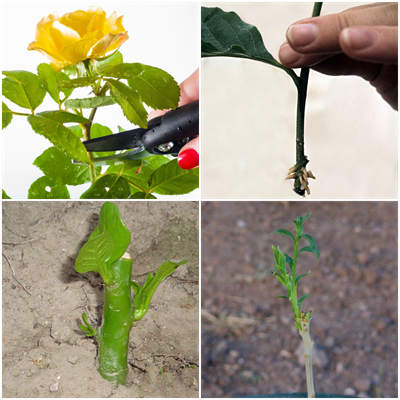
Method of stem cutting
- First, cut out the small part of the stem with node and bud from an adult plant.
- Always keep the part with bud above the ground, and the other part should bury in the soil.
- After some days, the buried part of the stem will start to produce the adventitious roots, which eventually develops as an individual plant.
- The new plant is structurally and genetically the same as the parent plant.
- The cutting method is successful in Champa, rose, money plant and sugarcane.
Layering:
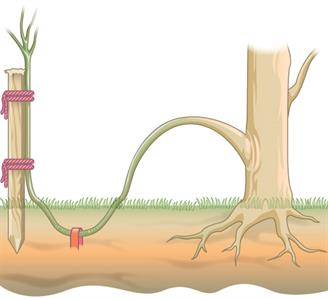
Layering in plants
- Layering is used for low-growing and flexible stems.
- In this method, a part of the stem will be buried and covered with the soil.
- After some days, the adventitious roots develop; eventually, they will be detached from the parent plant.
- Layering is the best mode for a climbing rose, Forsythia, Rhododendron, jasmine, Bougainvillea and honeysuckle.
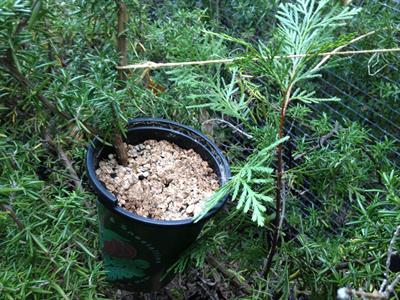
Layering of rosemary plant
Grafting:
Grafting means a composite of plants by joining the different plant's shoot and root systems.
History:
Grafting has been practised in ancient China and Mesopotamia for over \(4,000\ \)years. People noticed the incompatibility issues that can develop when grafting olives and other fruiting trees as early as \(2,000\ \)years ago For more history of grafting - Read here.
Terminologies:
- Scion: The part of a grafted plant that will develop the shoot system on the stock.
- Stock or rootstock: The part of a grafted plant that will develop the root system.
- Adventitious bud or root: The bud or root are developed from any part of the shoot or root of the plant under favourable environmental conditions.
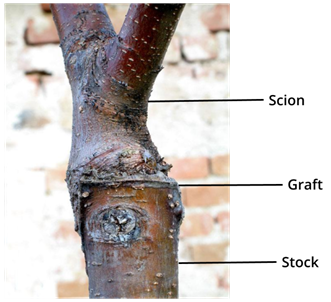
Locating the scion and stock in the grafted plant
Selection of plants:
The scion should be younger than the rootstock as well as the rootstock should have a strong root system.
Process of grafting:
- Both scion and stock should be equal in size for successful grafting.
- First, make a V-shaped incision or notch in the stock and the matching V-shaped cut in the scion.
- After placed them together for the success of grafting, cover them with the mixture of wet mud with nutrients like plant hormones and fertilizers surrounded by polythene bags.
- After some days, the adventitious buds or roots develop, and the composite plant has successfully grafted.
- It is practised in plants such as guava, mango, rubber, citrus, pear and apple.
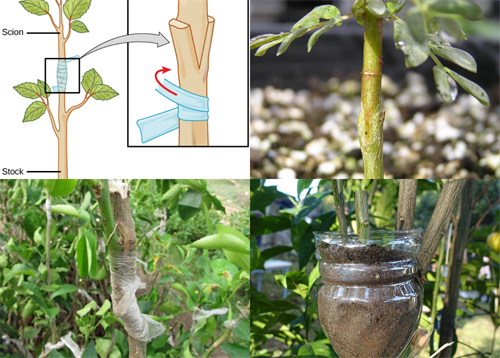
The process of grafting
Reference:
https://www.pxfuel.com/en/free-photo-eyplc/download
https://www.flickr.com/photos/xoques/4709527482
https://upload.wikimedia.org/wikipedia/commons/thumb/7/7d/Adventitious_roots_of_Magnolia_cutting.jpg/512px-Adventitious_roots_of_Magnolia_cutting.jpg
https://upload.wikimedia.org/wikipedia/commons/thumb/c/c5/Grafting_lemon_tree.jpg/1024px-Grafting_lemon_tree.jpg
https://upload.wikimedia.org/wikipedia/commons/thumb/c/c6/Stem_Cutting.jpg/1280px-Stem_Cutting.jpg
https://openstax.org/books/biology/pages/32-3-asexual-reproduction
https://openstax.org/books/biology/pages/32-3-asexual-reproduction
https://www.flickr.com/photos/noiseprofessor/19212680379
https://commons.wikimedia.org/wiki/File:Figure_32_03_04.jpg
https://www.flickr.com/photos/scotnelson/14115772934
https://upload.wikimedia.org/wikipedia/commons/a/ac/Gei%C3%9Ffu%C3%9Fveredelung.jpg
